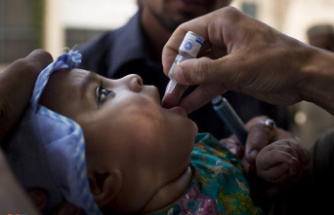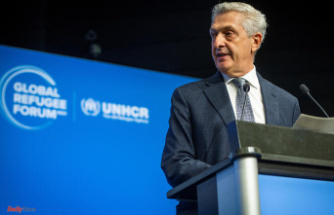Malawi President Lazarus Chakwera called on Wednesday March 15 for international assistance to deal with the ravages of Cyclone Freddy, which killed at least 225 people in this poor southern African country. The head of state has declared two weeks of national mourning, with the flags lowered for the first seven days. “This cyclone is the third in thirteen months to hit our country. Proof of the realities of climate change,” Chakwera said in a televised address.
Traveling earlier to Blantyre (South), the economic capital and epicenter of the disaster, Mr. Chakwera attended a ceremony for the victims of the cyclone. "It's a national tragedy," he said. I call on international partners and donors to provide further assistance in the face of the destruction and damage caused by Tropical Cyclone Freddy. »
An emergency ministerial meeting authorized the release of 1.6 billion kwacha ($1.5 million) to help affected populations. "But I can already tell you that this money will not be enough," Chakwera stressed in his speech.
Survivors found on trees and rooftops
With exceptional longevity, Freddy had already hit southern Africa at the end of February, killing seventeen people, before returning in the opposite direction at the beginning of March. With less powerful winds but carrying torrential rains, the cyclone caused heavy flooding and deadly landslides in Malawi, a landlocked country where a state of disaster was declared. The police and the army were deployed.
Several dozen people are still missing. President Chakwera has pledged to "intensify" the search. More than 88,300 others are homeless. Schools and churches have been turned into emergency accommodation. A total of 165 centers were opened, while a dozen health establishments were impacted by the destruction.
These are "enormous", explained to Agence France-Presse (AFP) Felix Washon, spokesperson for the Malawi Red Cross Society, which is carrying out relief operations. And the collapsed bridges and the still high water level in some places make rescue operations even more difficult. Survivors were found on trees and rooftops.
In the township of Chilobwe, near Blantyre (the capital), the vulnerable houses made of bricks and earth were ravaged by impressive mudslides. But life has already slowly resumed, markets and businesses have reopened. Barely two days ago, in this same poor neighborhood, families and rescuers were digging in the mud, sometimes with their bare hands, in the hope of finding a loved one.
"The city is almost an island"
The NGO Doctors Without Borders (MSF), present on the spot, fears in particular an increase in cases of cholera in this country in lack of vaccines and which is already fighting against the deadliest epidemic it has known of this infectious disease.
The cyclone also hit neighboring Mozambique on its second pass. A still partial assessment reports twenty-one dead. In the coastal town of Quelimane (Centre) about forty kilometers from where the cyclone landed, the rain has not stopped since the weekend. Many houses are destroyed, roofs torn off and roads cut: "The city is almost an island", according to Thomas Bonnet of the NGO Friends in Global Health, on the spot. President Filipe Nyusi was expected in the region on Wednesday.
According to the latest forecast, Freddy should dissipate over land, but the rains are likely to persist for several more days. The cyclone, which made an unprecedented crossing of more than 8,000 kilometers from east to west in the Indian Ocean, has been raging for more than thirty-five days. It is on the way to being classified as the longest cyclone in history by meteorologists.
Tropical storms and cyclones appear several times a year in the southwest Indian Ocean, during the hurricane season from November to April.












